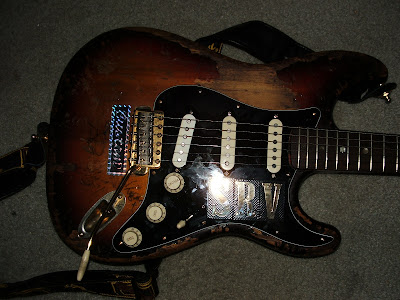Friday, September 4, 2015
Thursday, November 22, 2012
Reader Spotlight: A Written Overview of Carbon Fiber.
Use of Carbon Fibre in the Automotive Industry is Set to Increase Dramatically
The use of carbon fibre composites in automotive applications is rising dramatically as producing lightweight vehicles becomes increasingly important. Market research company Lucintel forecasts a growth of thirteen percent per year in the market until the year 2015 and states that supply has increased to the level that ‘some manufacturers now have ample supply of carbon fibre with relatively low lead times to consumers’. Mercedes-Benz, Lamborghini, BMW and other high-end car manufacturers have committed themselves to the increased use of carbon fibre reinforced plastic components in their cars in order to lessen their weights, as it remains the most light-weight, readily available and high-strength alternative to metal.
Fuel Economy
Carbon fibre has been used for a considerable length of time in the car industry in the name of performance but automotive company Ford are trying to bring it to the masses in the name of fuel economy. In order to demonstrate how important it could be in non-performance car applications, they installed a hood comprised of carbon fibre reinforced plastic on a Ford wagon and displayed it at a conference in Germany earlier this year. The hood weighed approximately half of what a normal steel hood would weigh and still passed all of the safety requirements, including those related to pedestrian protection during frontal crashes and dent resistance. It had a quick production time and the carbon reinforced plastic component was created using new techniques developed as part of Ford engineers’ advanced researched projects.
Ford gave no clue as to how much this prototype hood cost to make but in a day and age where car manufacturers are trying to eliminate every last pound from a vehicle’s weight, it means that the use of carbon fibre for the purpose of economising on fuel is set to take off, especially seeing as car manufacturers across the globe are being placed under increasing pressure to help to reduce carbon footprints. Lowering the amount of fuel that vehicles need to run is the perfect means of doing this.
Implications of the Prototype
Ford’s prototype has major positive implications for future car owners. In the not so distant future, those who are looking for credit to buy a car or browsing the internet to compare car finance deals will be able to spend more on their vehicles in the knowledge that they won’t have to fork out as much money for fuel over the course of their cars’ lifespan. Research conducted by the Oak Ridge National Laboratory in Tennessee demonstrates that carbon fibre composites can reduce the weight of a vehicle by up to three fifths. The government’s Fuel Economy website states that reducing a car’s weight by a mere one hundred pounds can increase its fuel economy by two percent, meaning that the new technology could result in significant savings for drivers.
Reduced Repair Costs and Increased Safety
The fact that carbon fibre car parts do not rust or corrode like steel also means that they can save drivers money on repair costs, as they can reduce or eliminate the necessity to replace vehicle parts that have suffered damage due to rust. Rust on vehicles spreads over time so cars with carbon fibre parts are likely to possess greater longevity. Carbon fibre is stronger and stiffer than steel, which means that it can give cars an advantage with regards to safety as well. According to the Oak Ridge National Laboratory, it has a greater rate of energy absorption than steel and is therefore less dangerous in a collision situation.
In Conclusion…
Carbon fibre is likely to be used more and more in the automotive industry as car manufacturers realise its potential for both increasing the performance of vehicles and reducing the amount that drivers have to spend on fuel for their cars. One of the main concerns expressed by motorists is that the cost of fuel is too high so capitalising upon this technology will enable vehicle makers to sell their products to budget conscious members of the public without the buyers having to worry as much about the effect that running a car will have upon their finances. It is likely to impact positively upon both consumers and manufacturers of cars.
-A written work Submitted by E. Pierce
This Article was sent to www.carbonfiberarchitecture.com as a submitted work to be published on the site. If you would like to have your articles, work, or projects published on our site, please contact via email at emanuelsonarch@gmail.com.
Labels:
architecture,
automotive,
carbon,
economy,
education,
engineering,
factory,
fiber,
fuel,
industry,
manufacturing,
mfg,
pierce,
test
Monday, October 15, 2012
Sunday, June 17, 2012
New Museum Project Renderings
Labels:
3d,
architect,
architecture,
cad,
commercial,
emanuelson,
jkj,
ken,
museum,
rendering,
rogers
Wednesday, June 13, 2012
SRV Number One Replica Sratocaster
These are photos of my Stevie Ray Vaughan Number One tribute Strat. It was always a dream of mine to have a guitar similar to Stevie's main guitar. After a considerable amount of work, here is the finished product. Mine is somewhat different than most of the SRV tribute guitars out there. It has a left handed neck, with a gold head stock and Fender locking tuners. Stevie was known to have left handed necks on right handed guitars, which many saw as a remembrance of Jimi Hendrix. It has a right hand tremolo although the body is modified to accept a left hand tremolo.

Saturday, June 9, 2012
Monday, May 28, 2012
Tuesday, July 19, 2011
Wednesday, May 4, 2011
Subscribe to:
Posts (Atom)




















